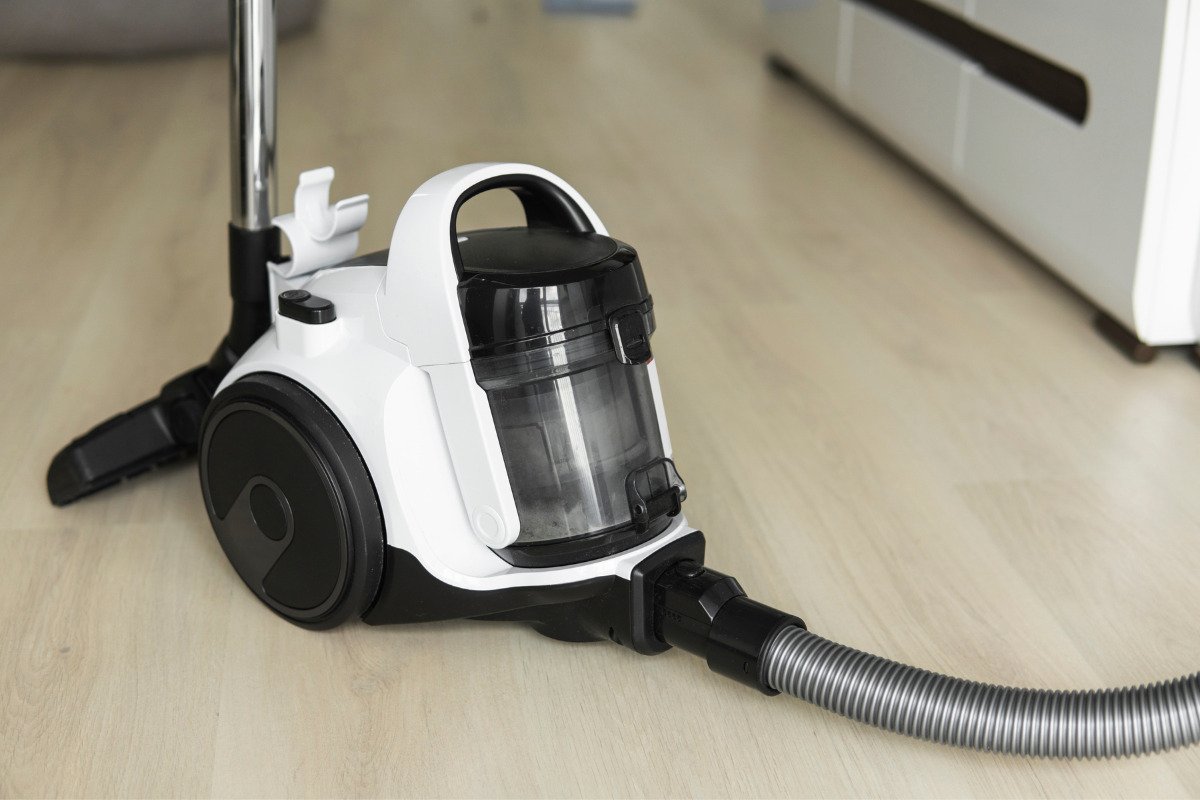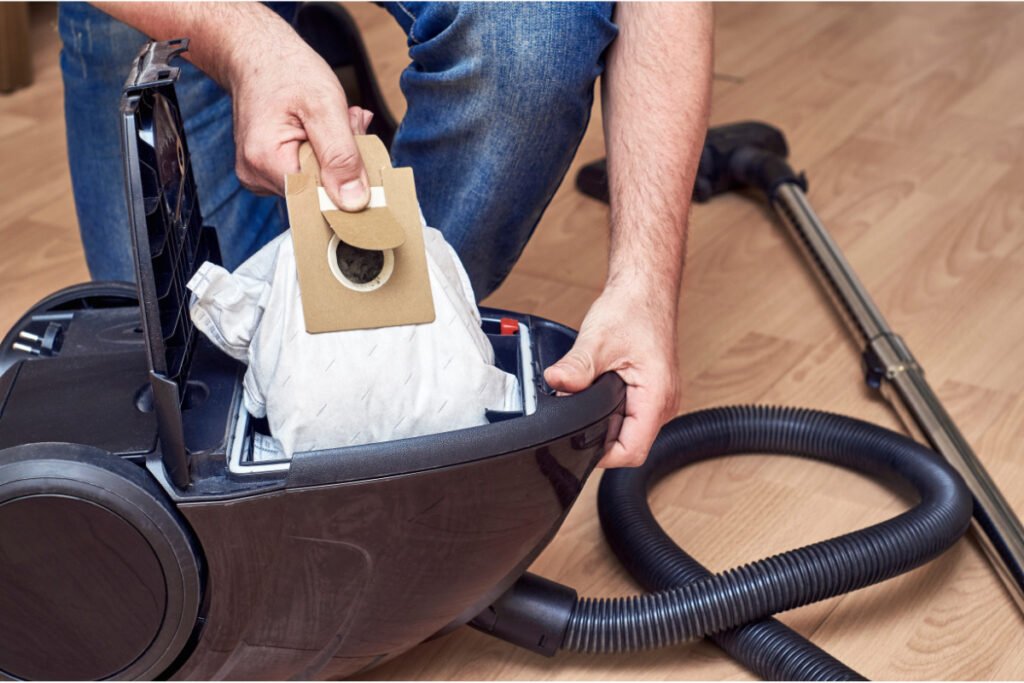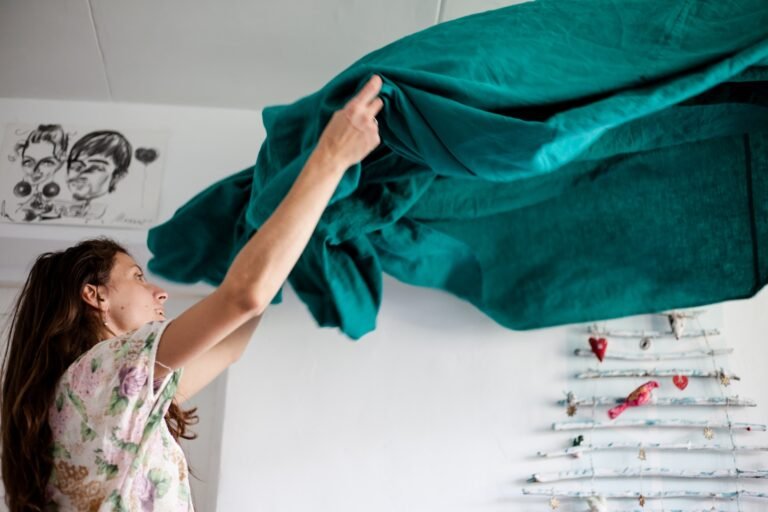Bagged vs. Bagless Vacuum Cleaners: Making the Right Choice

In our daily lives, maintaining cleanliness is a task that often falls on the shoulders of trusty household tools. Among these, vacuum cleaners stand out as unsung heroes, silently battling dust and debris to keep our living spaces fresh and tidy. This article delves into the world of vacuum cleaners, focusing on a pivotal decision many consumers face. It is choosing between bagged vs bagless vacuum cleaners.
Picture this: a home where floors are spotless, carpets are free of crumbs, and no dust bunny dares to linger in the corners. It’s a comforting thought, isn’t it? Well, the reality is that achieving this level of cleanliness is often made possible by the efficiency of vacuum cleaners. These indispensable appliances play a crucial role in maintaining a hygienic environment, ensuring that our living spaces remain visually appealing and free from allergens and microscopic intruders.
Now, let’s zoom in on a specific aspect that has perplexed many when it comes to vacuum cleaner shopping – the age-old debate of bagged vs. bagless vacuum cleaners. If you’ve ever found yourself standing in the aisle of a home appliance store, staring at rows of vacuum cleaners with a puzzled expression, you’re not alone. The choice between these two types can be a head-scratcher, and understanding the pros and cons is key to making an informed decision.
Bagged Vacuum Cleaners

If you’re considering a bagged vacuum cleaner, it’s essential to understand how it works. Bagged vacuum cleaners help remove dirt and dust from carpets and floors by creating suction that pulls debris into the cleaner’s hose.
➡The Suction Mechanism
A bagged vacuum cleaner creates a vacuum that draws in dirt and dust. Air is forced through the cleaner’s hose and filter and then propelled through the bag, depositing the debris inside. The motor that powers the vacuum cleaner generates suction, which pulls dirt and debris from the surfaces you are cleaning.
➡The Role of Disposable Bags
The disposable bag is an essential component of a bagged vacuum cleaner. It helps capture and hold dirt, dust, and other debris suctioned into the cleaner. You can easily replace these bags when full, ensuring the vacuum cleaner operates efficiently.
When you’ve filled the bag, you can detach it from the cleaner and throw it away. This way, you don’t need to come in contact with the dirt and dust, making it a more hygienic option. Bagged vacuum cleaners are better suited for people with allergies or asthma because the bags capture and trap the dust, reducing the dust released into the air.
Advantages of Bagged Vacuum Cleaners
If you’re looking for a vacuum cleaner that combines convenience with excellent dust containment capabilities, then a bagged vacuum cleaner might be your ideal choice. Here are some of the key advantages that make bagged vacuum cleaners a popular choice among many households:
✅Superior Dust Containment
Bagged vacuum cleaners can contain dust and debris more effectively than their bagless counterparts. The disposable bags act as a barrier between the collected dirt and the air you breathe, preventing dust from returning to your home. As a result, bagged vacuum cleaners are a great option if you or members of your household suffer from allergies or respiratory issues.
✅Efficient Filtration
Along with the bags, bagged vacuum cleaners have high-quality filters that trap tiny particles and prevent them from escaping into the air. It means bagged vacuums can capture more dust and allergens than other vacuum cleaners, ensuring a cleaner and healthier living environment.
✅Less Exposure to Allergens
Since bagged vacuum cleaners can contain dust and allergens, they are a great option for people sensitive to airborne particles. You can conveniently dispose of the bags without exposing yourself to the collected dirt and debris, making cleaning more hygienic and hassle-free.
Types of Filters Used in Bagged Vacuum Cleaners
Filters are an important component of bagged vacuum cleaners. They play a crucial role in maintaining the air quality of your home, preventing clogs, and ensuring optimal suction power. Here are some of the most common types of filters used in bagged vacuum cleaners:
▶Mechanical Filters
- These filters are foam, cotton, or synthetic fibers.
- They trap dust and other small particles in the porous material.
- They are affordable and easy to replace.
▶HEPA Filters
- HEPA stands for High-Efficiency Particulate Air.
- These filters are tightly woven fibers that capture smaller particles than mechanical filters.
- They capture allergies and other airborne particles well.
- They are more expensive than mechanical filters but offer superior air filtration.
▶Charcoal Filters
- These filters contain activated charcoal, which helps to absorb odors and other contaminants from the air.
- They are often used in pet-friendly homes to remove pet odors.
- They are less effective at trapping dust and other particles than mechanical or HEPA filters.
Replacing your vacuum cleaner’s filters is important to ensure optimal performance. Most manufacturers recommend replacing the filter every 3-6 months, depending on usage. When and how to change the filter is in your vacuum cleaner’s user handbook.
Maintenance and Care Tips for Bagged Vacuum Cleaners
Bagged vacuum cleaners need regular maintenance to work well and last long. To ensure that your vacuum cleaner remains in pristine condition, here are some helpful hints:
⭕Replace bags regularly
Replace disposable bags at approximately ¾ full to maintain optimal suction power. Overfilled bags can cause the motor to work harder and reduce the vacuum cleaner’s efficiency. Keep a stock of replacement bags on hand so you don’t run out when needed.
⭕Clean or replace filters
Filters are important for trapping fine particles and maintaining air quality in your home. Follow manufacturer recommendations to clean or replace them regularly. HEPA filters can be vacuumed or washed, while other filters may need replacement periodically. Check your manual for specific instructions.
⭕Check for clogs
If you notice a decrease in suction power, check for clogs in the hose, wand, or brush roll. When removing any blockages, be sure not to harm the components by using a coat hanger that has been straightened or another instrument of a comparable size.
⭕Keep the brush roll clean.
You should regularly clean the brush roll of hair and debris to prevent clogs and maintain optimal performance. Use scissors or a brush to remove any tangled hair or fibers.
⭕Store properly
When not in use, be sure to keep your vacuum cleaner in a clean and dry spot, away from any sources of moisture or direct sunlight. Keep the power cord wrapped neatly and avoid subjecting the vacuum to any unnecessary stress or impact.
⭕Have it serviced
Take your vacuum to a professional if it makes strange noises, smells, or performs poorly. Your vacuum cleaner may last longer with regular maintenance and tune-ups.
Following these maintenance and care tips for bagged vacuum cleaners, you can ensure your cleaning device stays in good condition and functions effectively for years.
Bagless Vacuum Cleaners

If you’re considering purchasing a bagless vacuum cleaner, it’s important to understand how they work. Unlike bagged vacuum cleaners, which use disposable bags to collect dirt and debris, bagless vacuum cleaners use alternative dirt collection methods.
👉🏻Cyclonic Technology
Many bagless models utilize cyclonic technology to separate dirt and dust from the air. This technology creates a vortex that spins air and dirt at high speeds, separating the two. The heavier dirt particles fall to the bottom of the dirt canister while the lighter air is expelled back into the room.
👉🏻Filters
Bagless vacuum cleaners also incorporate one or more filters to trap fine particles that may escape the cyclonic separation process. These filters prevent dust and allergens from being re-circulated back into the air. Over time, filters can become clogged and require cleaning or replacement to maintain optimal suction power.
👉🏻Dirt Canister
The dirt canister is a key component of a bagless vacuum cleaner. Typically, it’s made of clear plastic, so you can easily monitor the level of dirt and debris. Once full, you simply remove the canister and empty it into the trash.
While bagless vacuum cleaners offer certain benefits, such as cost savings and convenience, they may not be the best choice for all households. Before choosing, consider your cleaning requirements and preferences.
Advantages of Bagless Vacuum Cleaners
Bagless vacuum cleaners have become increasingly popular and for good reasons. Here are some of the advantages of using a bagless vacuum cleaner:
✅Ease of Use
With bagless vacuum cleaners, you don’t have to worry about replacing bags now and then. You can simply empty the canister and resume your cleaning task. It not only saves you money on the purchase of bags but also saves time and effort.
✅Better Visibility
Bagless vacuum cleaners offer better visibility when seeing what you’ve cleaned up. It is because you can see the dirt and debris accumulating in the canister. It can be especially beneficial if you have a pet that sheds frequently, as you can monitor how much hair and fur you’ve collected in the canister.
✅Effective Filtration
Bagless vacuum cleaners have high-efficiency filtration systems that capture dust, dirt, and allergens. It is particularly important for individuals who suffer from allergies or asthma, as bagless vacuums can help reduce the number of allergens in the air.
✅Cost Savings
Over time, bagless vacuum cleaners can be more cost-effective as you don’t have to keep buying replacement bags. Although the initial cost of a bagless vacuum cleaner may be higher, you can save money in the long run.
✅Eco-Friendly Option
Bagless vacuum cleaners are an eco-friendly option since they don’t require disposable bags that end up in landfills. It makes them a great choice for environmentally conscious individuals who want to minimize their carbon footprint.
Types of Filters Used in Bagless Vacuum Cleaners
Bagless vacuum cleaners utilize filters to trap dirt, dust, and other debris. Several filters are commonly used in bagless vacuum cleaners, each with unique features and benefits. The type of filter used in your bagless vacuum cleaner can impact its performance, efficiency, and maintenance requirements. Here are some of the most common types of filters used in bagless vacuum cleaners:
⬜HEPA Filters
High-efficiency particulate Air (HEPA) filters are one of the most effective filter types in bagless vacuum cleaners. They capture 99.97% of 0.3-micron particles. HEPA filters benefit households with allergies, asthma, or other respiratory conditions. They require occasional replacement, depending on usage and manufacturer recommendations.
⬜Cyclonic Filters
Cyclonic filters can create a powerful swirling motion inside the vacuum cleaner, which separates dirt and debris from the air. A dirt canister or bin collects the separated particles. Cyclonic filters are highly efficient and provide consistent suction performance even when the dirt canister is full. They are low-maintenance and do not require frequent replacement.
⬜Pre-Motor Filters
Pre-motor filters near the vacuum cleaner’s motor prevent debris from entering and damaging it. They are usually made of foam or felt and require regular cleaning or replacement, depending on usage and manufacturer recommendations.
⬜Post-Motor Filters
Post-motor filters are located at the back of the vacuum cleaner and capture any remaining particles not trapped by the other filters. They prevent the vacuum cleaner from returning dirt and debris into the air. Depending on usage and manufacturer recommendations, post-motor filters require occasional cleaning or replacement.
Choosing the right type of filter for your bagless vacuum cleaner depends on your individual cleaning needs and preferences. Following the manufacturer’s filter maintenance, replacement, and cleaning guidelines for the best vacuum cleaner performance and lifetime.
Considerations for Choosing Between Bagged and Bagless Vacuum Cleaners

Now that you know the functioning, advantages, and maintenance of bagged and bagless vacuum cleaners, it’s time to consider which type is best for your needs. While both options have their merits, certain factors may influence your decision.
➡Household Allergies
If you or your family members suffer from allergies, bagged vacuum cleaners may be the safer choice. They typically feature advanced filtration systems that trap allergens and prevent them from escaping into the air. In contrast, bagless vacuum cleaners may release fine particles into the atmosphere, exacerbating allergy symptoms.
➡Cleaning Frequency
You may prefer a bagless vacuum cleaner if you clean your house frequently. These models usually have transparent dirt cups that let you see when they are full, making it easier to empty. On the other hand, bagged vacuum cleaners require regular bag replacement, which may be inconvenient if you clean frequently.
➡Cost
Bagged vacuum cleaners are more expensive over time since you must purchase disposable bags regularly. In contrast, bagless vacuum cleaners eliminate the need for bag replacements, making them more cost-effective in the long run. However, keep in mind that bagless vacuum cleaners may be pricier upfront.
➡Dirt Disposal
If you prefer a mess-free dirt, disposal process, a bagged vacuum cleaner may be the way to go. When you remove the full bag, you can dispose of it without making direct contact with dirt or debris. Bagless vacuum cleaners, on the other hand, require you to manually empty the dirt cup, which may be messier.
➡Cleaning Surface
Consider the type of flooring and surfaces you must clean when choosing between bagged and bagless vacuum cleaners. Bagless vacuum cleaners work well on hard floors and low-pile carpets, while bagged vacuum cleaners are ideal for high-pile carpets and upholstery.
Ultimately, choosing between bagged and bagless vacuum cleaners depends on your preferences and household requirements. Consider these factors when deciding, and choose the best option that suits your needs.
Frequently Asked Questions
Q: Why do bagged vacuums lose suction?
A: Bagged vacuums can experience a loss of suction for several reasons. One primary factor is the bag itself. As the bag fills up with dirt and debris, it creates a barrier restricting the airflow, diminishing the vacuum’s suction power. Additionally, if you don’t replace the bag regularly, it can become overly packed, impeding airflow. Following the manufacturer’s guidelines for bag replacement is essential to maintain optimal suction performance. Regular maintenance prevents clogs and ensures efficient airflow throughout the vacuum system.
Q: What is the best bagged upright vacuum cleaner?
A: Determining the “best” bagged upright vacuum cleaner depends on individual preferences and specific cleaning needs. Several reputable brands offer high-quality options with varying features. It’s advisable to consider factors such as suction power, filtration efficiency, and additional features like attachments and ease of maneuverability. Customer evaluations and professional advice might reveal model performance and durability. Some well-regarded brands in the bagged upright vacuum category include Miele, Hoover, and Kenmore.
Q: Why are bagless vacuums so popular?
A: Bagless vacuums have gained popularity for several reasons. One key factor is their convenience in terms of maintenance and cost savings. With a bagless system, users can visually monitor the dirt and debris collected, eliminating the need for regular bag replacements. It saves money in the long run and reduces environmental impact. The transparent dustbin lets users see when it’s full, prompting timely emptying. Additionally, bagless vacuums often feature HEPA filtration, contributing to better air quality by trapping smaller particles. The ease of emptying the dustbin and the absence of ongoing expenses associated with purchasing replacement bags make bagless vacuums attractive for those seeking a user-friendly and cost-effective cleaning solution.
Q: Are bagless vacuums louder?
A: The noise level of bagless vacuums can vary among different models and brands. Generally, bagless vacuums may produce a slightly louder sound than their bagged counterparts. The noise level is influenced by factors such as the motor power and design of the vacuum. However, advancements in vacuum technology have led to quieter operation in many bagless models. When considering noise, checking product specifications and customer reviews and possibly trying out the vacuum in-store is advisable. Some bagless vacuums come equipped with noise-reduction features, making them more pleasant to use while maintaining effective cleaning performance.
Q: Do bagless vacuums smell?
Like any household appliance, bagless vacuums can develop odors over time if not properly maintained. The absence of bags doesn’t inherently lead to odors, but the dustbin and filters can accumulate dirt and debris, creating a potential source of unpleasant smells. Regular cleaning of the dustbin, filters, and other components are essential to prevent odor buildup. Some bagless models feature washable filters, making it easier to keep them fresh. By maintaining good hygiene practices, emptying the dustbin promptly, and cleaning or replacing filters as recommended by the manufacturer, users can minimize the chances of unwanted odors and ensure that their bagless vacuum remains efficient and odor-free.
Conclusion
Bagged or bagless vacuum cleaners depend on personal taste and household demands. Bagged vacuums offer the advantage of easy disposal and are often equipped with efficient filtration systems, making them suitable for users with allergies. On the other hand, bagless vacuums are celebrated for their cost-effectiveness and environmental friendliness, as they eliminate the need for disposable bags. Whichever path you choose, it’s crucial to prioritize regular maintenance to ensure optimal performance.
When deciding, consider factors like suction power, filtration efficiency, and noise level. We hope this exploration has shed light on the nuances of bagged and bagless vacuum cleaners, empowering you to make an informed choice for your home. If you have any questions or would like to share your experiences with these vacuum types, please feel free to comment below. Your insights can contribute to a more comprehensive understanding of the bagged vs. bagless debate, and we appreciate your valuable input.


![Best Dyson Cordless Vacuums [Buyers’ Guide]](https://relentlesshome.com/wp-content/uploads/2020/02/dyson-vacuum-cleaners-768x512.jpg)



